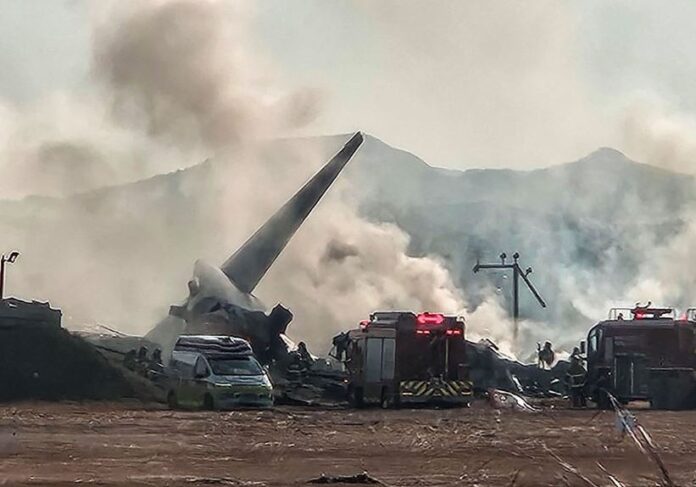A tragic sequence of events unfolded at Muan International Airport when a Jeju Air flight crashed, claiming numerous lives. The incident began when the control tower alerted the pilot of potential bird strikes near runway no.01.
In response to the warning, the control tower instructed the aircraft to divert to runway no.19. However, disaster struck when the plane, shortly after issuing a mayday call, collided with navigation equipment and subsequently crashed into a wall, just two minutes after the distress signal, according to officials.
Also Read: Hydraulic Failure Forces Emergency Landing of Amsterdam-Bound Flight
The aftermath of the crash has seen investigators recover the flight data recorder, a critical piece of equipment in piecing together what went wrong. However, the search for the cockpit voice recorder continues, as it would provide further insight into the moments leading up to the tragedy.
The cause of the crash, while not yet officially determined, appears to be linked to the bird strike warning, with the investigation still actively underway to ascertain all contributing factors. The aviation community and public await further details as the investigation progresses.
Death toll in this tragic South Korea Plance Crash rises to 174, including 5 children under 10 years old.
Key Points of the Muan Plane Crash:
- Mayday Call: The Jeju Air flight issued a may day alert after receiving a warning about possible bird strikes from the control tower.
- Redirection: The control tower redirected the plane to land on runway no.19 to avoid the bird strike area.
- Collision: The aircraft struck navigation equipment and then crashed into a wall just two minutes after the mayday call.
- Recovered Data: The flight data recorder has been recovered by investigators, but the cockpit voice recorder is still missing.
- Ongoing Investigation: The cause of the crash is under investigation, with a focus on the bird strike warning and subsequent events.



